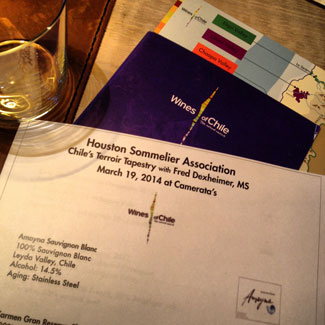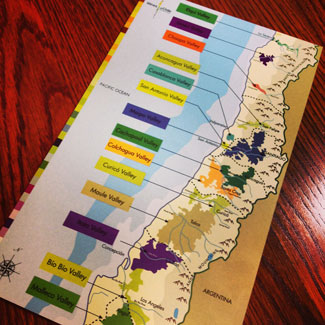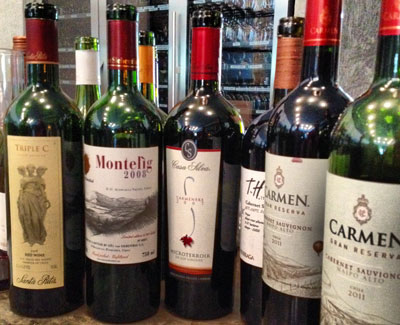Exciting Times in Chile: Redefining Their Terroir & Wines
If you think you know Chilean wines, take another look. The Chileans are redefining their terroir and in the process are redefining their wines and improving quality using a simple concept – find the right grape varieties for the right location and terroir. This was the message that came across when I attended a luncheon seminar held by the Houston Sommelier Association at Camerata’s Wine Bar at Pauli’s Restaurant in Houston’s Montrose district. Featured speaker was Fred Dexheimer, MS.
The concept for the new classification of Chile’s wine regions is really quite simple: There is more diversity in grape growing conditions going west to east (from the Pacific coast to the high Andes Mountains) than going north to south. To handle the west-to-east diversity, the new system calls out Costa areas (coastal regions with the cool, moist influence of the sea), Entre Cordilleras areas (regions between mountain ranges with intermediate conditions and deep soils), and Andres areas (regions with increasing elevation that make vines work hard, reducing crop loads and thus adding structure to the wines).
Using this new approach, the wine growing regions of Chile can be understood more easily since it relates to what we’ve learned about wine growing in northern California with the coastal Russian River, Sonoma and Napa regions. In much the same way, Chile’s winemakers are optimizing production of white wines like Sauvignon Blanc and Chardonnay and lighter reds (Pinot Noir) from the coastal areas going up the scale with Syrah, Merlot, Carmenere to Cabernet going inland and up to the Andres areas.
We tasted through a range of Chilean wines that included:
Amaya Sauvignon Blanc (Leyda Valley) – herbal and a bit tropical
Carmen Gran Reserva Chardonnay (Casablanca Valley) – rich, clean style
Undurraga TH Chardonnay (West Limari Valley) – crisp, acidic and reductive made on the lees.
Sol de Sol Chardonnay (Malleco Valley) – super clean, lush style with a dominant minerally note
Casa Silva Microterrior Carmenere (Colchagua Valley) – red plum with notes of herb and spice
MontGras Reserva Carmenere (10% Cabernet Sauvignon) (San Jose Estate Vyd – Colchagua Valley)
Undurraga TH Cabernet Sauvignon (alto Maipo) – herbal, dusty and dark ripe cassis notes
Clos de Fous Cabernet Sauvignon (Alto Cachapoal) – lighter body, crisp, black fruit notes
Los Vascos Le Dix (Colchague Valley) – Complex nose or dark fruit, earth and graphite
Santa Rita Triple C (Cab Franc, Cab Sauv, Carmenere) (Alto Jahuel Vyd – Maipo Valley) – black fruit, mint, tannic structure but smooth
Von Siebenthal Montelieg (Cab Sauv, Petit Verdot, Carmenere) (Aconcagua Valley) – a hit of old world with coffee and wet earth, big tannins
— — — — —
Thanks to the Wines of Chile and the Houston Sommelier Association for a great program.



